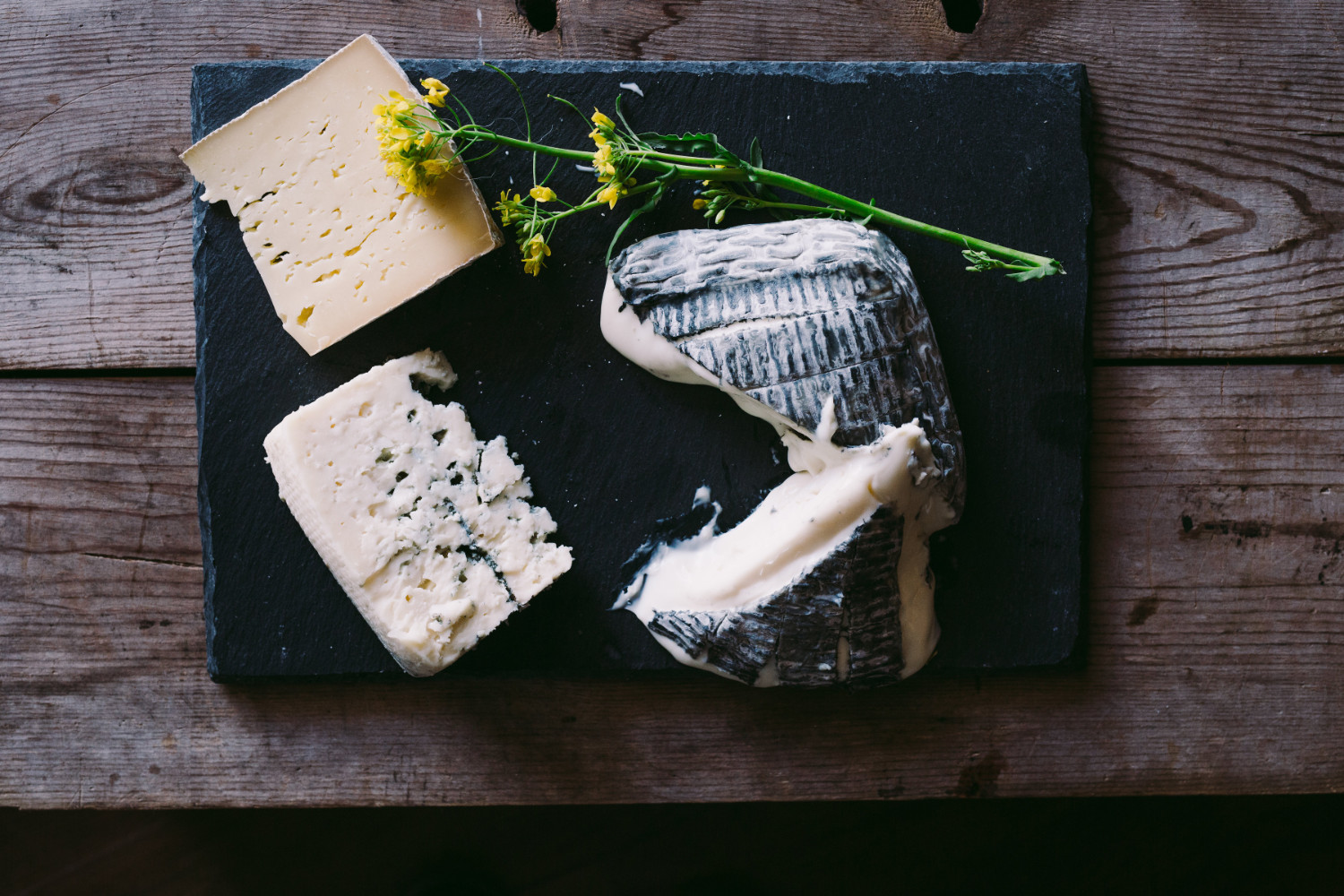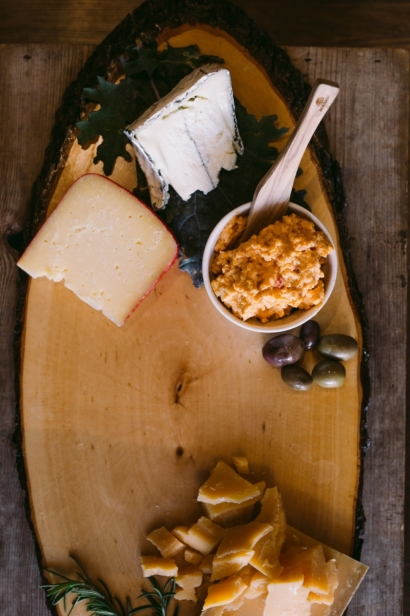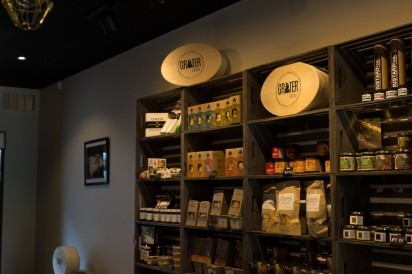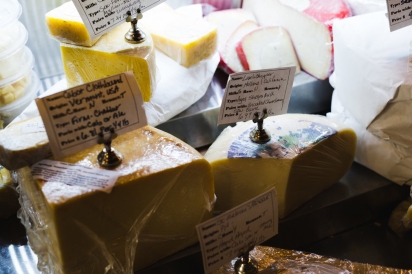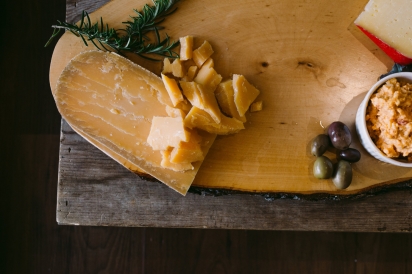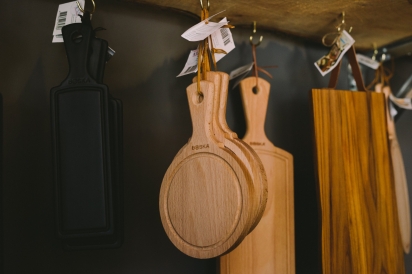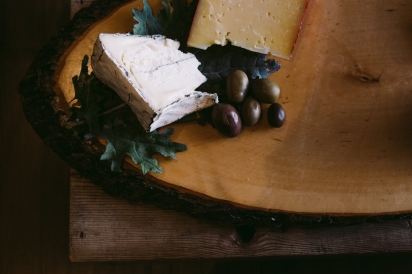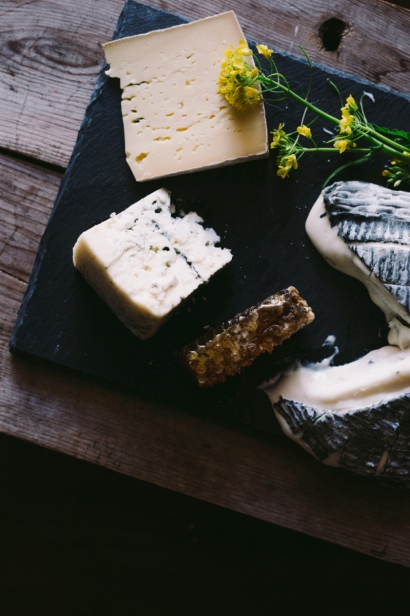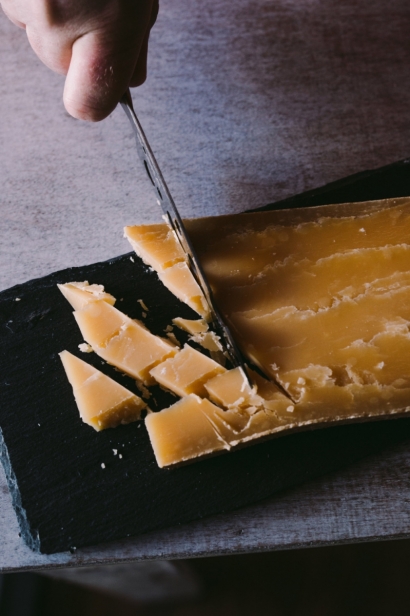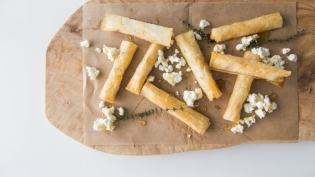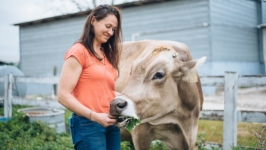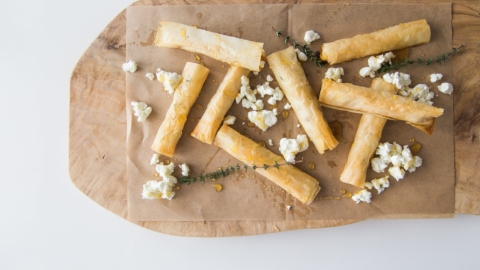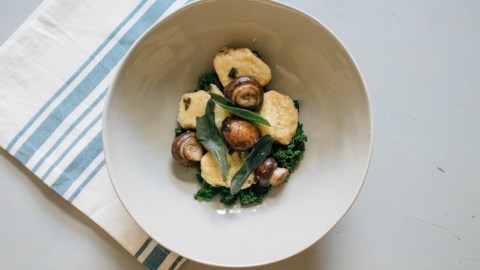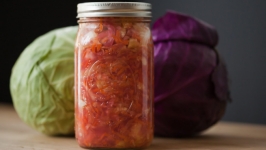Say {Artisanal} Cheese
First-time customers to my specialty cheese shop are curious about the products and wonder what the big deal is about “fancy” or artisanal cheese. Occasionally I am asked why it costs so much. Cheese is cheese, right? Well, technically, yes—in the same way that my Honda can take me to the same places as a Bentley. Artisan cheese is much like any other artisanal product: It is handmade and relatively unadulterated, with additional care taken to create a product with complex flavors.
Chemistry has a lot to do with the making of cheese. Apart from a few minor additions, milk is the main ingredient. So, it’s not surprising that anything affecting the chemistry of the milk you start with will have a huge impact on the final product. Understanding where the milk comes from and how it is handled by the cheesemaker helps explain why the “fancy” stuff is so expensive.
WHAT THE ANIMAL EATS: This is one of the biggest difference between commercial and artisan cheese. Milk used in commercial cheese production is obtained from animals that were barn raised and fed mostly a diet of grain or dried hay/sileage. Artisanal cheese is generally made with milk from mostly pasture-raised, grass-fed animals. (A term related to the milk used in cheese is farmstead, which refers to cheese produced using the milk of animals raised on the same farm where it is made.)
SEASONALITY: If an animal is eating the lush sweet grass of spring and summer, it yields milk that is very different from the milk from an animal eating dried grasses or hay. Commercially produced cheese does not have seasonality, as barn-raised animals are fed a diet that does not vary from season to season.
LACTATION CYCLES: When animals are producing milk, or lactating, this is referred to as their lactation cycle. Not all animals give milk year-round and the length of a lactation cycle varies between species. The chemistry of the milk changes during the lactation cycle. Milk chemistry even changes between morning milkings and those done in the evening. Mass-produced cheese demands consistency and avoids this specific issue by staggering the lactation cycles of the animals used in its products.
THE TYPE AND BREED OF ANIMAL: The molecular structure of milk is at the core of the flavor. A cheese made from cow milk is very different from sheep, goat or water buffalo milk cheese. If a cheese tastes goaty, this refers to the distinct tangy characteristics of goat milk. These differences vary among the same species as well. The molecular structure of milk differs by the breed of cow, goat or sheep. For example, a Holstein cow does not produce the same type of milk as a Jersey cow.
FAST VS. SLOW: Another factor in the artisanal versus commercial cheese equation is speed. Commercial cheese is made literally by the ton. The whey is quickly and mechanically pressed out, then the cheese is vacuum packed and shipped as fast as possible. Some commercially produced cheese is aged, but most manufacturers do not want to take up space in a warehouse for this time-consuming step. Artisan cheese is made by hand, the whey is typically drained overnight and then, depending on the cheese, it is aged. Hard cheeses are aged on wooden boards or metal shelves. Aging can be done in many ways, including natural caves or, more often, a climate-controlled man-made cave. During aging, cheese will be turned by hand. The rind on certain cheeses is washed or rubbed with brine, wine, beer, ash or even coffee to assist in the development of the ultimate aroma and flavor. Ever had a nice funky Red Hawk from Cowgirl Creamery? Well, that is a washed-rind cheese and it’s the bacteria created by the washing that helps give it that rosy coloring and pungent aroma.
Finally, when the cheese is done, it’s wrapped in a special air-permeable paper, which allows the beneficial bacteria, created during the aging process, to survive. The slower process allows things to occur that just can’t happen during the faster commercial cheesemaking process. This is why I always suggest to keep cheese in wax paper or special cheese paper that allows for it to breathe. In the end, all these differences do result in a cheese with a different taste and texture. Does all of this mean that the block of Cracker Barrel cheddar you love so much isn’t good cheese? No way— there are names like Cracker Barrel on the award winner’s list every year at the American Cheese Society competition. But like all artisanal products, it’s the inherent nonconformity and uniqueness of the final product that so many of us enjoy. So, try the fancy stuff and enjoy the fruits of another’s labor, both human and animal.
Find more information about Grater Goods and their artisanal cheese offerings at www.gratergoods.com


